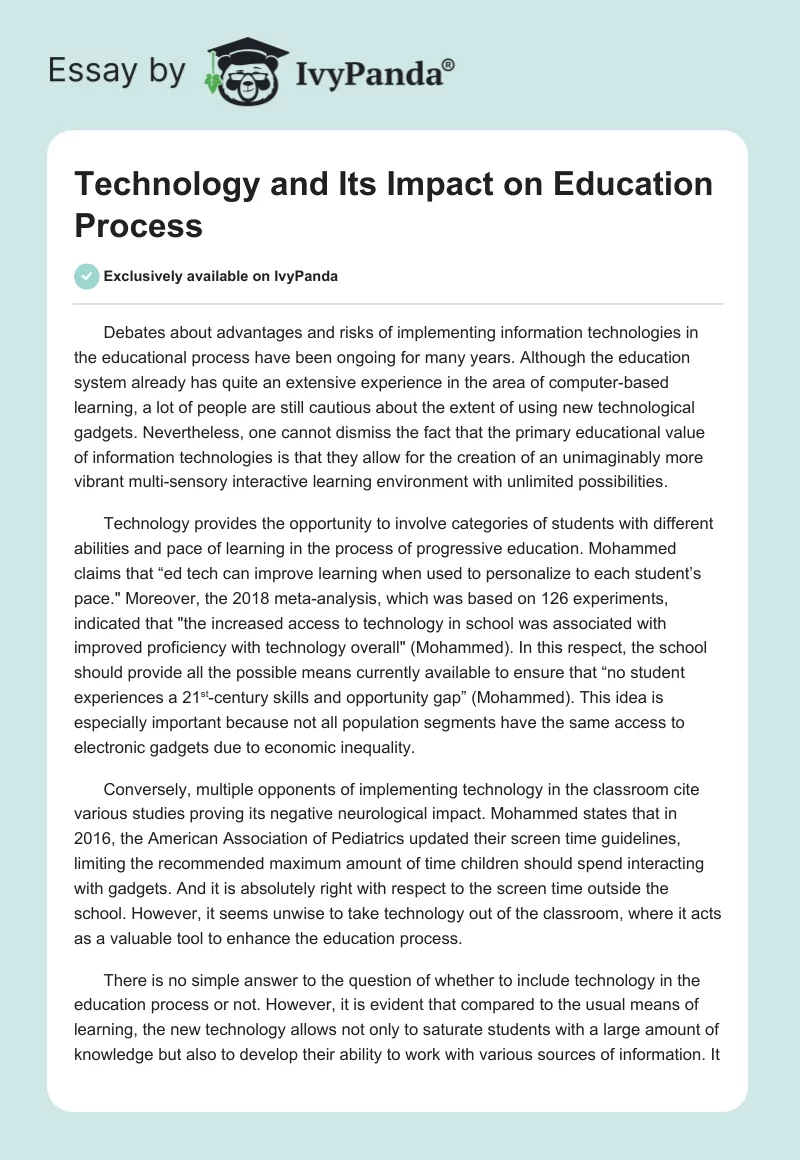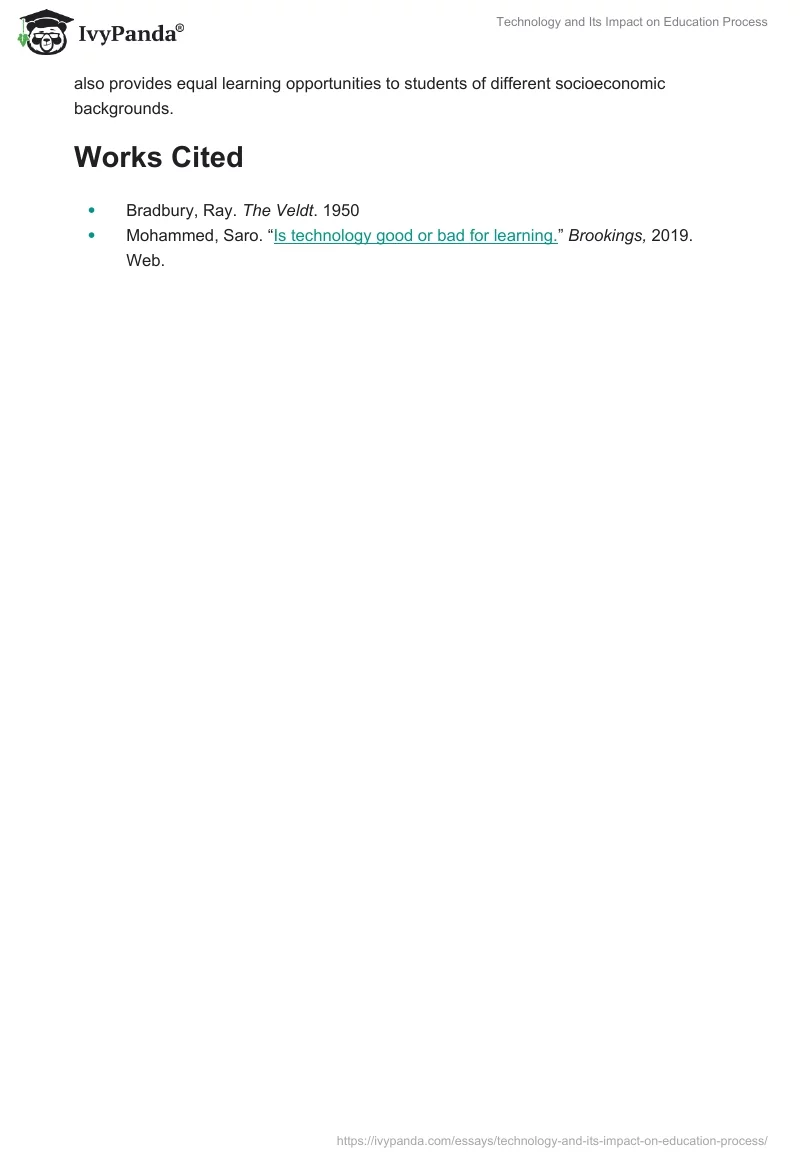Debates about advantages and risks of implementing information technologies in the educational process have been ongoing for many years. Although the education system already has quite an extensive experience in the area of computer-based learning, a lot of people are still cautious about the extent of using new technological gadgets. Nevertheless, one cannot dismiss the fact that the primary educational value of information technologies is that they allow for the creation of an unimaginably more vibrant multi-sensory interactive learning environment with unlimited possibilities.
Technology provides the opportunity to involve categories of students with different abilities and pace of learning in the process of progressive education. Mohammed claims that “ed tech can improve learning when used to personalize to each student’s pace.” Moreover, the 2018 meta-analysis, which was based on 126 experiments, indicated that “the increased access to technology in school was associated with improved proficiency with technology overall” (Mohammed). In this respect, the school should provide all the possible means currently available to ensure that “no student experiences a 21st-century skills and opportunity gap” (Mohammed). This idea is especially important because not all population segments have the same access to electronic gadgets due to economic inequality.
Conversely, multiple opponents of implementing technology in the classroom cite various studies proving its negative neurological impact. Mohammed states that in 2016, the American Association of Pediatrics updated their screen time guidelines, limiting the recommended maximum amount of time children should spend interacting with gadgets. And it is absolutely right with respect to the screen time outside the school. However, it seems unwise to take technology out of the classroom, where it acts as a valuable tool to enhance the education process.
There is no simple answer to the question of whether to include technology in the education process or not. However, it is evident that compared to the usual means of learning, the new technology allows not only to saturate students with a large amount of knowledge but also to develop their ability to work with various sources of information. It also provides equal learning opportunities to students of different socioeconomic backgrounds.
Works Cited
- Bradbury, Ray. The Veldt. 1950
- Mohammed, Saro. “Is technology good or bad for learning.” Brookings, 2019. Web.


